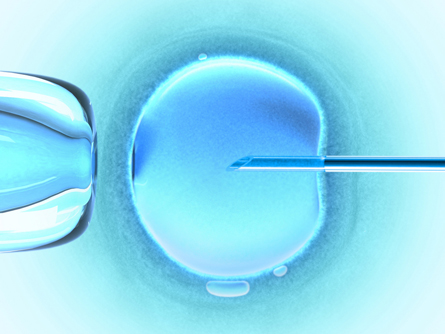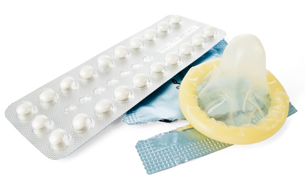Module 4
1. Module 4
1.16. Lesson 4
Module 4—From Fertilization to Birth
Lesson 4—Reproductive Technologies: Enhancing or Reducing Fertility, Monitoring Development, and Use in Parturition

© iDesign/shutterstock
 Get Focused
Get Focused
Humans have been trying to control their reproductive potential for thousands of years. Some of the earliest known reproductive technologies were contraceptive practices dating back to 1550 BC. “According to an ancient medical manuscript called the Ebers Papyrus (1550 BC), women were advised to grind together dates, acacia (a tree bark), and a touch of honey into a moist paste, dip seed wool into the sweet gel and place it in the vulva. As primitive as this sugary mix appears, it was usually effective. Acacia eventually ferments into lactic acid, a well known spermicide.” This quote, along with a host of additional contraceptive information and displays, are at The History of Contraception Museum in Toronto, Canada. This world renowned, one-of-a-kind museum has over 600 different forms of contraceptives.
reproductive technology: any application of human intelligence that increases or decreases reproductive potential

© ZTS/shutterstock
Reproductive technology now includes much more than just contraceptives. In this lesson reproductive technologies are divided into three broad groups: enhancing or reducing fertility, monitoring development, and use in parturition. Many more technologies than can be studied in this lesson are available.
The following focusing question is addressed in this lesson:
- What technologies are used to assist fertilization, to monitor development, and to facilitate parturition?

© Tomasz Trojanowski/shutterstock
 Module 4: Lesson 4 Assignment
Module 4: Lesson 4 Assignment
There is no assignment for this lesson. The information from this lesson will be assessed in the Module Assessment.
Because this is the last lesson of Module 4, at the end you will need to submit the Module Assessment, which is the preparation based on your answers to the five Module Assessment questions presented in the Big Picture. When you have completed Lesson 4, go to the Module Summary and Assessment page for information on the assignment and a marking rubric.
You must decide what to do with the questions that are not marked by the teacher.
Remember that these questions provide you with the practice and feedback that you need to successfully complete this course. You should respond to all of the questions and place those answers in your course folder.
While you are completing this lesson, there will be many opportunities for you to acquire, understand, and practise the concepts that are presented to you. As you complete these activities, as well as your summary notes, you will file everything in your course folder to reference when you are preparing for exams.
Remember, you also have the option of trying additional questions from the textbook for further practice. Consult with your teacher for the answers to these questions. The Key will also provide you with many Diploma Exam-style multiple-choice, numerical-response, and written-response questions that will be an excellent review of the module. Practising your responses to these types of questions is good preparation for the Diploma Exam.